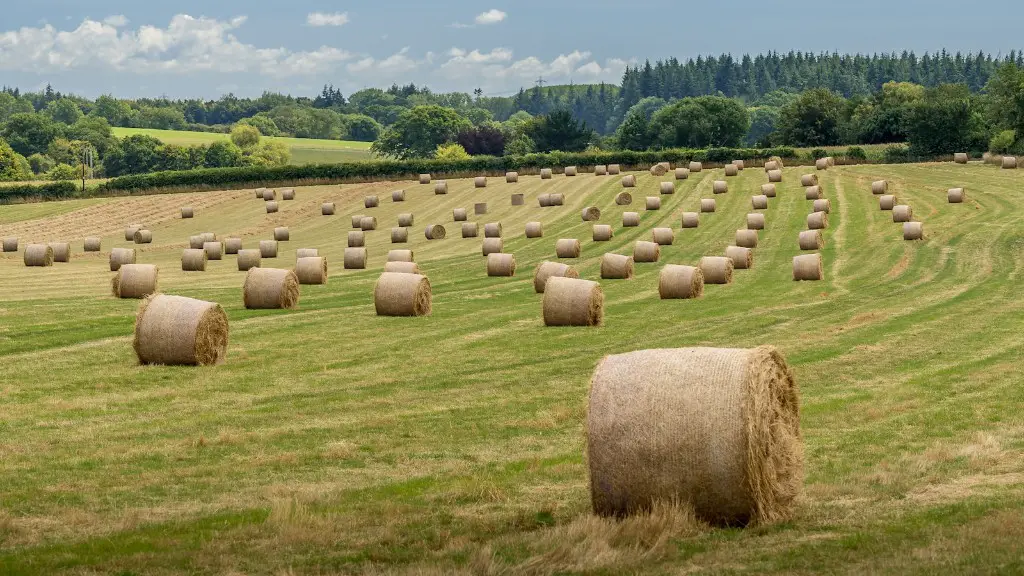The Agriculture sector is responsible for 10 percent of total U.S. greenhouse gas emissions, making it the third-largest emitting sector, behind Transportation and Electric Power generation. The majority of agricultural emissions come from livestock and their waste. Livestock production emits methane gas from manure, and nitrous oxide from animal waste and fertilized soils.
The agricultural sector is responsible for about 10 percent of total U.S. greenhouse gas emissions, according to the Environmental Protection Agency.
Where does 25% of greenhouse gas emissions come from?
Electricity production accounts for a quarter of all greenhouse gas emissions, making it one of the largest sources of emissions. The majority of these emissions come from burning fossil fuels like coal and natural gas. Therefore, reducing our reliance on these energy sources is essential to mitigating climate change.
Electricity and heat production account for a large percentage of global greenhouse gas emissions. The burning of coal, natural gas, and oil for electricity and heat is the largest single source of global greenhouse gas emissions. Reducing emissions from this sector will require a shift to cleaner energy sources and increased efficiency.
What are 3 of the largest contributors of greenhouse gases
Electricity, transportation, industry, commercial/residential, agriculture, and land use/forestry are all sources of greenhouse gas emissions. Greenhouse gases trap heat in the atmosphere and contribute to the greenhouse effect, which is a major driver of climate change. Reducing emissions from these sources is essential to mitigating climate change.
Burning fossil fuels to generate electricity and heat is a major contributor to greenhouse gas emissions. These gases, such as carbon dioxide and nitrous oxide, trap heat from the sun and contribute to climate change. Reducing our reliance on fossil fuels is essential to mitigating the effects of climate change.
Which gas is responsible for 75% of greenhouse gases?
CO2 emissions are the main driver of climate change, accounting for about 76 percent of total greenhouse gas emissions. Methane, primarily from agriculture, contributes 16 percent of greenhouse gas emissions, while nitrous oxide, mostly from industry and agriculture, contributes 6 percent. To effectively address climate change, we must reduce emissions from all sectors of the economy.
Carbon dioxide is a gas that occurs naturally in the atmosphere, but burning coal, oil, and natural gas is releasing the carbon stored in these “fossil fuels” at an unprecedented rate. This is causing the level of carbon dioxide in the atmosphere to increase, which is responsible for the “enhanced” greenhouse effect and climate change.
What is the biggest contributor to global warming?
Fossil fuels like coal, oil and gas are responsible for most of the greenhouse gas emissions that cause climate change. combustion of fossil fuels produces carbon dioxide, water vapor and other pollutants that contribute to global warming. As greenhouse gas emissions from human activity continue to rise, the Earth’s atmosphere is trapping more and more heat, causing the planet to warm. This rise in temperature is causing drastic changes in our climate, including more extreme weather events, melting ice and rising sea levels. To avert the most catastrophic impacts of climate change, we must rapidly transition away from fossil fuels and towards clean, renewable energy sources.
It’s no surprise that China is the world’s biggest emitter of carbon dioxide (CO₂) emissions. After all, it’s the most populous country in the world, and its economy is booming. What is surprising, though, is that the world’s top five largest polluters are responsible for roughly 60 percent of global CO₂ emissions. That’s a staggering statistic, and it underscores the need for all countries to do their part to reduce emissions.
What industry produces the most CO2
The main sources of greenhouse gas emissions are energy, direct industrial processes, and waste.
Energy: 732%
Direct Industrial Processes: 52%
Waste: 32%
Agriculture, Forestry and Land Use: 18%
According to the World Bank, these five countries emitted a total of 10,357 metric tons of carbon dioxide in 2013. China was responsible for the most emissions, at 6,896 metric tons. The United States was second, emitting 5,414 metric tons. India was third, emitting 2,134 metric tons. Japan emitted 1,278 metric tons, and Russia emitted 964 metric tons.
Carbon dioxide emissions have been on the rise in recent years, due to the increased use of fossil fuels such as coal and oil. Climate change is a major concern associated with these emissions, as carbon dioxide is a greenhouse gas that contributes to global warming. Reducing carbon dioxide emissions is a key priority for many countries in order to mitigate the effects of climate change.
What are the top 4 most potent greenhouse gases?
Fluorinated gases are greenhouse gases that contain fluorine atoms. They are powerful greenhouse gases because of their high global warming potentials (GWPs). Hydrofluorocarbons (HFCs), perfluorocarbons (PFCs), sulfur hexafluoride (SF6), and nitrogen trifluoride (NF3) are all fluorinated gases.
Fluorinated gases are used in a variety of applications including refrigeration, air conditioning, and other industrial uses. They are also emitted from coal-burning power plants.
While fluorinated gases have short lifetimes in the atmosphere, they are very potent greenhouse gases. For example, HFC-134a has a GWP of 1430, meaning that it is 1430 times more powerful than CO2 in terms of its ability to trap heat in the atmosphere.
Fluorinated gases are also very long-lived in the atmosphere. For example, SF6 can remain in the atmosphere for approximately 3200 years.
The Montreal Protocol is an international treaty that aims to phase out the use of fluorinated gases. Although the treaty does not include a specific target for the reduction of fluorinated gas emissions, it is hoped that the
As the world’s population continues to grow, the demand for food is also increasing. To meet this demand, farmers are clearing more and more land to farm. However, this comes at a cost.
Clearing land to farm emits a lot of greenhouse gases, which contribute to climate change. In addition, the farming itself (such as using fertilizers and other chemicals) also emits greenhouse gases. In total, farming accounts for 21 percent of global greenhouse gas emissions.
This is a huge problem, as greenhouse gases are one of the main drivers of climate change. If we want to stop climate change, we need to find a way to reduce emissions from farming. One way to do this is to promote more sustainable farming practices, such as using less fertilizer and more efficient irrigation. We also need to find ways to reduce the amount of land being cleared for farming.
Which produces almost 30% of the greenhouse gas emissions in the US
Industry is one of the biggest contributors to greenhouse gas emissions in the United States. Oil and gas production, in particular, are responsible for a large percentage of methane emissions – which is one of the most potent greenhouse gases. While there are some steps that industry can take to reduce emissions, it is clear that more needs to be done in order to address this issue.
Carbon dioxide (CO2) is a gas that is produced naturally by living organisms and by the burning of fossil fuels. Carbon dioxide accounts for the largest share of US greenhouse gas emissions. In 1990, the carbon dioxide emissions were approximately 85% of the total, although the carbon sinks in forested lands offset carbon dioxide emissions by about 8%.
What are the top 3 sources for methane emissions?
Oil and gas systems are the largest sources of methane emissions from human activities in the United States. Methane is a greenhouse gas that is more potent than carbon dioxide, and these systems are responsible for about one-third of all methane emissions in the country. Livestock enteric fermentation is the next largest source, responsible for about one-fifth of methane emissions. Landfills are the third largest source, responsible for about one-tenth of methane emissions.
Global warming is caused by a variety of things, including carbon pollution and climate change. Carbon pollution comes from burning fossil fuels like coal and oil, while climate change is caused by things like deforestation and burning fossil fuels. Both of these things contribute to greenhouse gas emissions, which trap heat in the atmosphere and cause the Earth to warm.
Warp Up
It is difficult to estimate the exact percentage of greenhouse gases that come from agriculture because it can vary greatly depending on the type of agriculture and the methods used. However, it is generally agreed that agriculture is responsible for a significant portion of greenhouse gas emissions.
Although emissions from agriculture make up a smaller percentage of greenhouse gases than emissions from other sectors, they are still a significant contributor to the problem of climate change. Reducing emissions from agriculture will require a concerted effort from farmers, policy-makers, and consumers.





